|
Diseases of Poultry
By Ivan Dinev, DVM, PhD
|
ASPERGILLOSIS
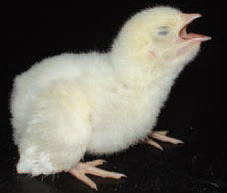
377.Aspergillosis is an acute or chronic respiratory disease. In rare instances, peritoneal, visceral or systemic lesions could be observed. It is caused by Aspergillus fumigatus. Dyspnea, enhanced, tense and heavy breathing are observed. Sometimes, rales and cyanosis could occur.
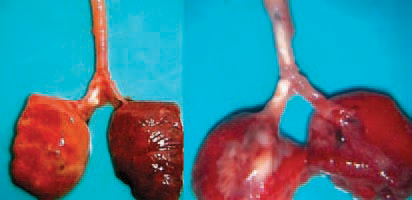
378.In the acute form, a serous fibrinous pneumonia is observed. Within the trachea and the main bronchi, usually near the bifurcation, obturation masses of coagulated fibrinous exudate are detected.

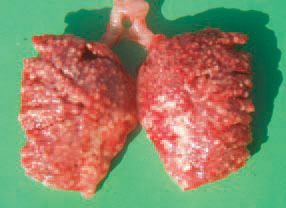
379.380.In the nodular form, multiple grey whitish or yellowish dense nodes in the lungs are observed (379 and 380). Chickens, turkeys, waterfowl and many other domestic or wild fowl are susceptible.
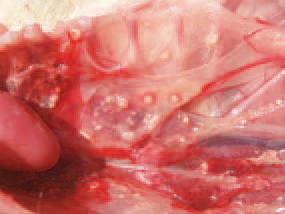
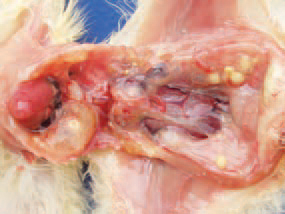
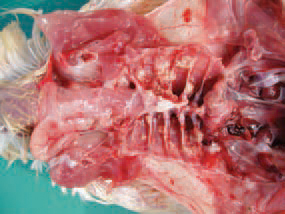
381.382.383.Aspergillus granulomas of the serous coats: pectoral (381), abdominal air sacs (32) and pleural (383), are sometimes compressed. The infection could occur inside (incu-batory aspergillosis)or outside the hatchery. Aspergillus fumigatus penetrates through the egg shell under ideal conditions for development and infects the embryos. The eggs explode and release a significant number of spores that contaminate the hatchery and the environment. The spores are spread via the venti-lation system that results in severe outbreaks in chickens younger than 3 weeks. Outside the hatchery, the infection occurs by inhalation of numerous spores from the contaminated forage, litter or environment. The overcrowding and the increased humidity are prerequisites for outbreaks.

384.Rarely, as a systemic manifestation, Aspergillus granulomas in the brain could be detected, when spores are transported via the blood circulation.

385The signs and macroscopic lesions are very indicative for aspergillosis. They could be confirmed by histology too. In acute aspergillosis, among the inflammatory necrotic masses, the spores are observed (arrow a) as well as the grown hyphae (arrow b) of the mould.
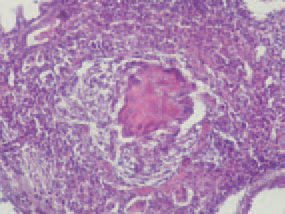
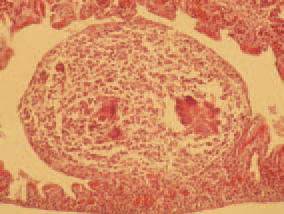
386.387.. In the nodular form, a characteristic Aspergillus granulomatous structure of tissues is discovered (386 and 387). The control includes: collection of clean eggs for hatching, disinfection and fumigation of eggs, incubators and hatcheries, regular checking of ventilation systems and change of air filtres in hatcheries, monitoring of hatcheries and the environment for mould contamination, use of dry and clean litter and non-contaminated forages, optimization of aeration and the humidity in premises where birds are housed. The treatment with fungicide antibiotics and different antimycotic drugs is not always efficient. Nistatin and copper sulfate (1:2000) with drinking water could be used.

388.mould is developed after inoculation of material on an appropriate nutrient media.






